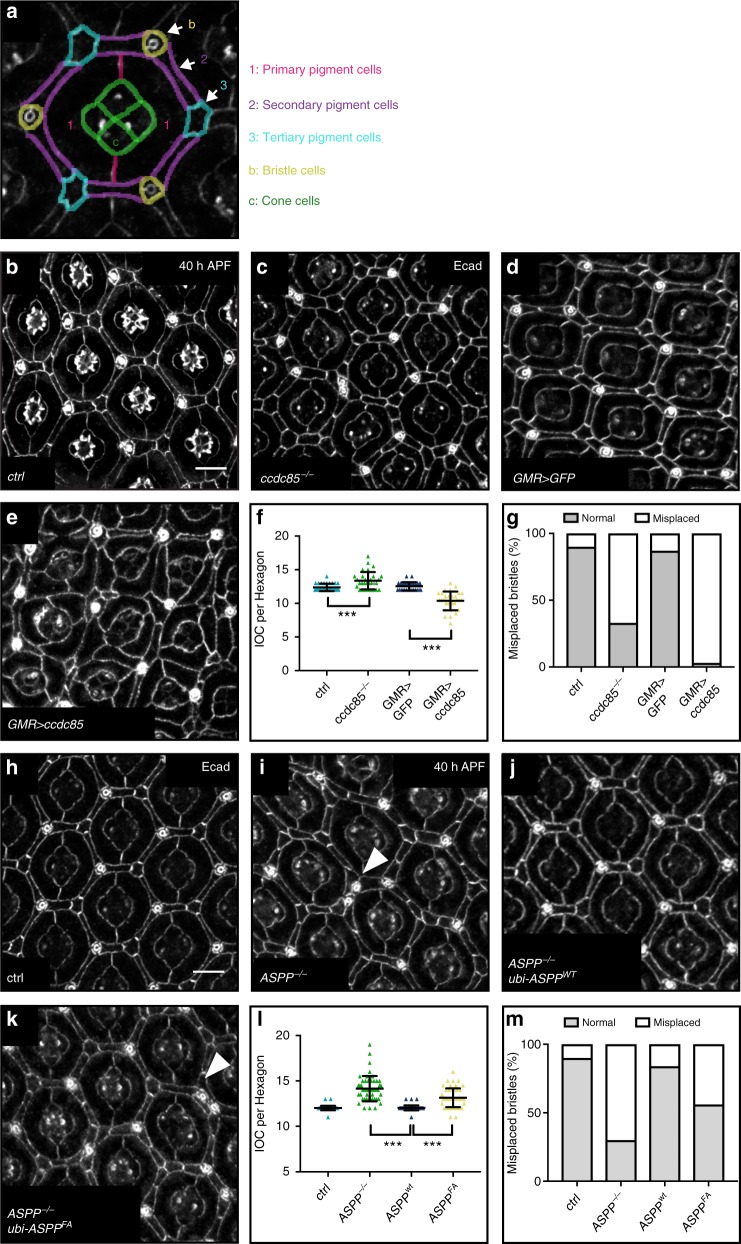Fig. 2.
ccdc85 and the RVxF motif of ASPP are required for eye patterning. a Schematics of a wild type ommatida showing normal number and arrangement of (1) primary, (2) secondary and (3) tertiary pigment, (b) bristle and (c) cone cells. b–e, h–k Confocal X–Y sections of pupal retinas of the indicated genotypes at 40 h APF stained with anti-E-cadherin antibody to mark cell outlines. Misplaced bristles (arrowheads) are indicated. See Supplementary table 1 for full genotypes. Scale bar = 10 µm. f Quantification of IOCs per ommatidial unit for the indicated genotypes. ccdc85 null mutants have an increased number of IOCs (13.37 ± 1.3), flies misexpressing Ccdc85 have a decreased number of IOCs (10.53 ± 1.4). Error bars represent the standard deviation (n = 30 hexagons from six retinas). *** indicates p < 0.001 using unpaired Student’s t-tests. g Loss of ccdc85, or Ccdc85 overexpression cause bristle misplacements. Bristle clustering or placement of a bristle in a neighbouring position that should be occupied by a tertiary pigment cell were counted as misplacements (n = 30 from six retinas). l Quantification of IOC per ommatidial units for the indicated genotypes. ASPP but not ASPP-FA expression restores the number of IOCs in ASPP mutants (12.02 ± 0.29 vs 13.15 ± 1.04 compared to 14.15 ± 1.39 in ASPP mutants). Error bars represent the standard deviation (n = 50 hexagons from six retinas). A one-way ANOVA test was carried out to determine if the differences among means were significantly different from each other. Three pairwise comparisons were carried out (ASPP−/− vs ubi-ASPPwt, ubi-ASPPwt vs ubi-ASPPFA and control vs ubi-ASPPwt) and p-values were adjusted using a Bonferroni correction. Significant differences are marked. *** indicates p < 0.001. m Quantification of the bristle misplacements in (g–j)

